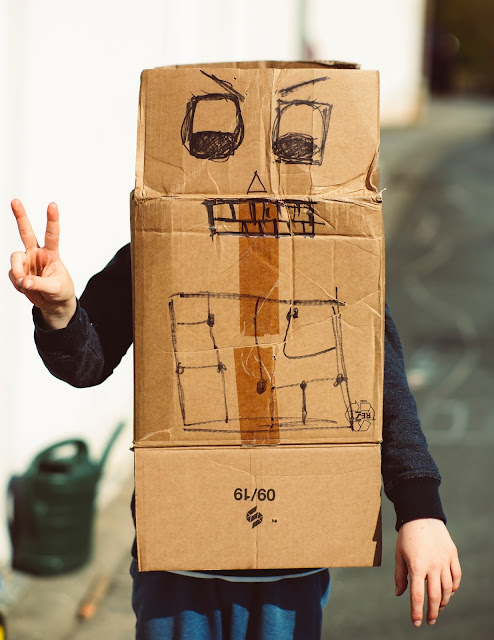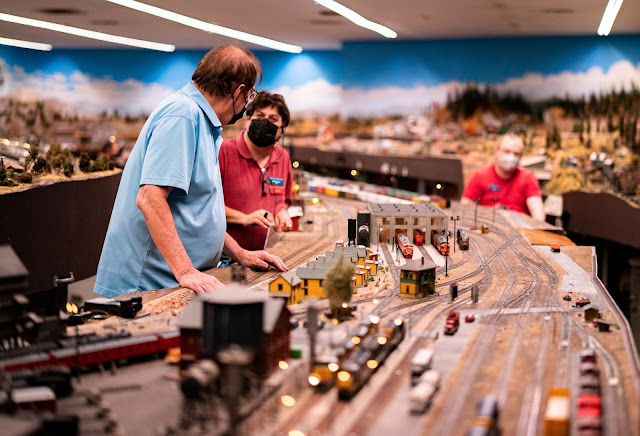How Limits Help You Become More Creative
Yes – my mother's first home was her grandparents' barn.
It could have been worse. They didn't live in their car or a shack made of scrap materials. And they weren't starving. My grandma and her mother raised a few goats, rabbits, and chickens, and tended a big garden. My grandfather had seasonal work in the logging industry, but eventually taught himself to drive heavy equipment and found year-round employment as an agricultural land leveler.
Believe it or not, there's an upside to being in need.
Scarcity inspires creativity.
Several studies reveal that when we have fewer assets, we explore more ways of getting what we want or need. Many researchers have concluded that in situations of abundance we simply have no incentive to innovate.
In other words, abundance can stifle creativity, but limits enhance it. Necessity really is the mother of invention.
Scarcity (or a self-chosen limitation) motivates us. Constraints force us to think harder and dig deeper to solve a problem. They require us to act with more imagination and resourcefulness.
Studies show that if you ask someone to design or build a new product, you might get a few good ideas. But if you ask them to design or build it within a tight budget, you'll get much better results. The limits challenge them to find a way. Maybe you've experienced this yourself with an Ikea hack or "Chopped" challenge.
Boundaries bring everything into focus. Without them, we get complacent and lazy. We take the path of least resistance, which is why belongings and busyness can grow out of control. We simply avoid making decisions.
Get out of the box
By defining a box, we force ourselves to think outside of it.
Remember the movie Apollo 13,* when the ground crew had to figure out how to fit a square CO₂ filter into an opening designed for a round filter? With only a few materials available in the spacecraft, and mere hours before the astronauts suffocated, those engineers and technicians had to get creative fast.
* This blog is reader-supported. When you buy through my links, I may earn a small commission.
Or consider Theodor "Dr. Seuss" Geisel's best-selling book Green Eggs and Ham. In 1960, publisher Bennett Cerf bet Geisel that he couldn't write a quality children's book using fewer than 100 unique words. Dr. Seuss not only accepted the bet but tightened the limitations even more. The story of Sam-I-am uses only 50 unique words! Geisel put himself in a tiny box to stimulate creative thinking, and the result has not only sold millions of copies worldwide, but is still going strong more than 60 years later.
Our culture tells us limits are bad. As consumers, we're expected to buy not only what we need, but whatever we want whenever we want it. Buy to celebrate, buy to console. Buy to make life easier, more exciting, to express yourself, or to realize your dreams. Buy to strengthen our economy. Even if you have no money, buy. It's on sale – buy two!
We buy everything we want but are convinced we need more. We have debt – a lot of it. And if we feel stressed, lonely, or sad, we soothe our feelings by buying something. Since we place no limits on shopping, we never get creative enough to find another solution.
We need boundaries.
My restless 3-year-old grandson scatters toys throughout his chaotic and overstuffed preschool. But at my house, he plays for more than an hour with a set of foam blocks and one toy car. He's happy and creative.
Like Damien, we're also distracted and dissatisfied as we search for more, but we find flexibility and depth when we confine ourselves to less.
- If you decide to get creative rather than buy a new outfit, you may discover more ways to mix and match what you already own.
- If you keep only basic kitchen utensils, you may find new ways to use your tools, or decide to improve your knife skills.
Boundaries can help us stop blowing through the limits of our money, space, time, and energy, bring a huge sense of liberation and relief, and open the door for new ideas and goals. The great news is that minimalism can help you achieve that freedom now. You don't have to wait until your "golden years" to downsize.
Limits let you choose.
For example, even if you have a huge walk-in closet, why not limit certain types of clothing to a specific number? You could "allow" only 6, 8, or 10 pants (trouser) hangers or one shoe rack with 12 slots. The hangers and rack limit your clothes to that number. You'll simplify getting dressed and enjoy every piece of clothing you own – and the uncrowded space in which you store it.
This idea works in other areas too:
- Choose a box or two and limit your sentimental keepsakes or Christmas décor to the chosen container(s).
- Limit your book collection to what fits in one bookcase.
- Give your children a shelf, closet, or other limited space (such as one basket for stuffed animals) and help them choose their favorites to fit within that boundary. Do the same with your hobby supplies.
- Pick a number! Decide to keep two sets of sheets for every bed, two sets of towels per person, or two mugs for every coffee/tea/cocoa drinker in your household.
As you choose favorite, useful, and necessary items, you realize that anything left over is less valuable to you than what you've already selected. Now you can declutter the leftovers with ease, confident that you have enough.
Few of us face real deprivation, so I'm talking about a chosen lifestyle, very different from actual poverty. I don't intend to glamorize hardship. But when we place limits on our belongings and activities, we become more decisive, imaginative, and skilled.
The path to a more comfortable and stress-free life doesn't require more square footage, an unlimited budget, or a fancy new closet system. We get there by evaluating what takes up our space, time, and energy, and offloading what we no longer need.
Boundaries – physical limits, no-shopping challenges, or white space on our calendars – help us create the life we want.
Updated August 2023







I've been reading about minimalism for a number of years, and have slowly made changes in our home and major changes in my buying patterns. It's been very gratfying in many areas of my life. Your ideas here about it inspiring creativity are spot on. Thank you for your continual words of wisdom and for sharing your writing talent.
ReplyDeleteHi Caroline, I appreciate your comment! Congratulations on the life-enhancing changes you've made.
Delete